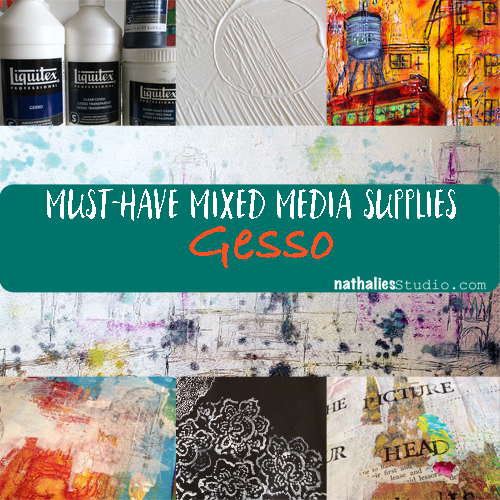
Last month I talked about my absolute favorite and ultimate must-have mixed media supply: Acrylic Paint, but there is more :) Another must-have for me is Gesso. In fact my students know me referring to Gesso as Dumbledore because it is a versatile helper that can put magic spells on your art work, or under…or in between … In any event it is an mixed media ally you want to have in your stash!
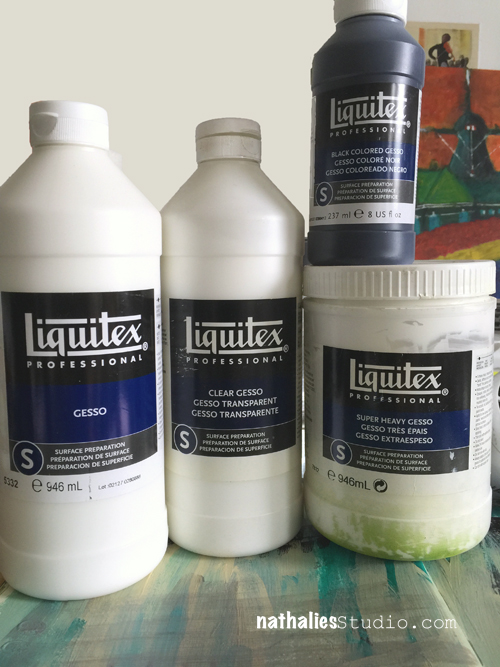
So now there are a couple different Gessoes on the market but before I get into that let’s talk about
What I love about Gesso:
- It can be applied to many surfaces like canvas, fabric, wood etc. and creates a prepared surface that can be painted on
- It gives tooth. So you can paint also surfaces where usually paint would not grab on- for example metal. Or you can prepare it for Charcoal and Pastels
- There is thicker Gesso and thinner Gesso. You can find white, black and clear Gesso – there are even other colored Gessoes but I would say these are the most used ones
- You can add color to it
- It seals absorbent surfaces so that paint does not bleed – most of the pre-stretched canvases you buy in store are already primed with Gesso. You can also use it to turn a thin book paper book into an art journal
- It is an amazing medium to add texture with tools and household items, embedding supplies or by using it with stencils etc.
- It is the cure whenever something went totally wrong…just paint over with gesso ….I told you…it’s Dumbledore :)
- White Gesso is the cheapest white paint and is matte – sometimes I don’t want this super shiny bright white and so I use the matte chalky looking white gesso
- It is amazing to tone down or change colors of your backgrounds for example in collage with a so called white wash
- there is a huge amount of techniques including resist techniques with gesso that you can do -ahhh- happy mixed media land
Here are some examples using Gesso:
Canvas: White Gesso over a textured and collaged background painted over with Acrylic Paints and Oil Bars
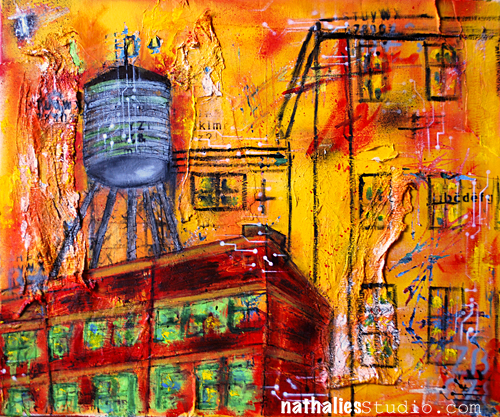
Art Journal Spread: Super Heavy Gesso through the Stencil included in my Stampendous Kaffee Klatsch Stamp Set
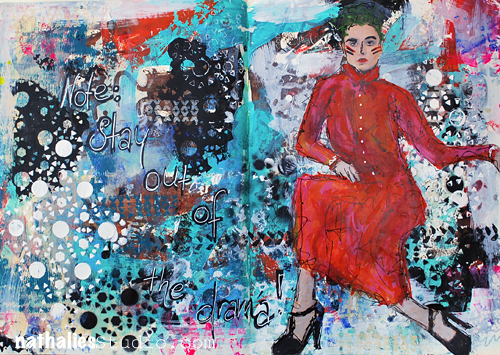
Canvas: nice texture through stencil on canvas with Super Heavy Gesso
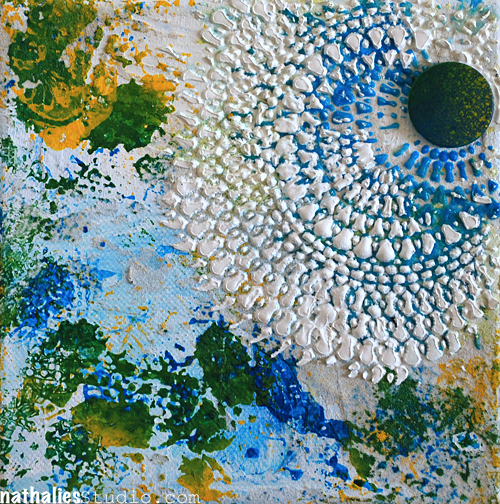
Art Journal – black gesso background with Derwent Art Bars (watersoluble wax bars) and my Stampendous Fiesta Stampset and Stencil
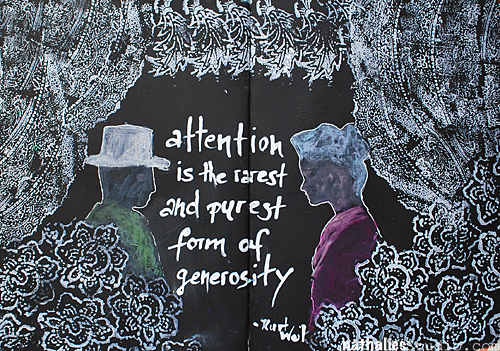
Canvas: Gesso on canvas partly taken off then scratched into and painted partly over with acrylic ink
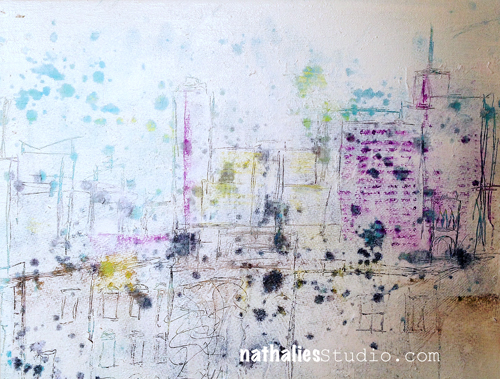
Art Journal Spread- toning down areas in art journal with Gesso spread with hotel key card
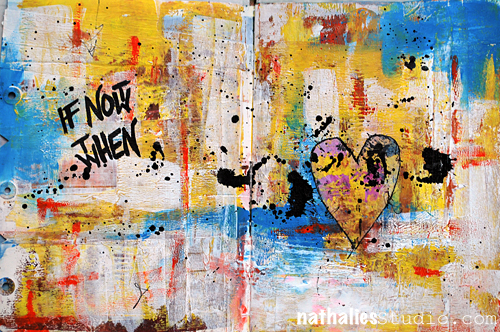
Art Journal Spread: Texture created with Gesso and then painted over with Acrylic Paint

I could go on and on because I really use Gesso all the time and there are so many ways to incorporate it into your art work!
Now… Which Gesso do I use?
First off – Disclaimer: I am a Brand Ambassador for Liquitex so naturally I tend to recommend Liquitex products. But my love for Liquitex Brand acrylics began long before I began working with the company and it is a genuine love for their products. In fact I was playing with their paints and acrylic media back then in Germany and I was just having the best of times and I shared this with the world. And that is how the relationship with Liquitex many years ago began
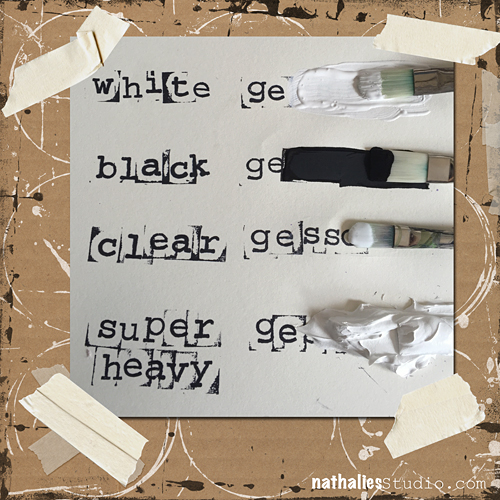
As always in this series- the answer to this question is based on my preferences, my style and my experiences – what is right for me, might not be right for you
- I do use mostly white gesso
- If I want to create a colored Gesso I add Acrylic Paint or Ink to clear Gesso as it does not tint my color
- I use black Gesso if I want to make colors that I use on top pop especially when I use Pan Pastel or Derwent Art Bars (water-soluble wax bars) on top
- I use Liquitex Professional Gessoes because I love the consistency and coverage.
- I use either the thin liquid Gesso or I go the total opposite and use the Super Heavy Gesso especially when I use it with Stencils or for sculptural texture
- I used to buy big buckets of white Gesso – which makes sense if you use them up in a workshop right away with lot’s of students, but now I use the 946 ml/32 oz ones at home and when I travel I use the 118 ml/4oz bottle. I just refill the small bottle now from the big one.
- When you start out and you just want to get a feel for Gesso – the Liquitex Basics Gesso is a good start, but the consistency is a bit more gritty and that might not what you like – if you don’t, I would rather recommend the Professional one.
How about a fun tutorial video where I use Gesso to create texture?
Playing with Gesso and Acrylic Ink
You can find the supply list for the video here .
Some useful tips when working with Gesso:
- Any tool from brushes to texture tools or else you use with Gesso, needs to be rinsed with water right away in case you want to reuse it. If you cannot do that, store the tools in a water container until you can clean it as dried gesso will ruin your tool.
- The same applies for stencils also because the gesso will actually clog the bridges of your stencils – so here is an exception to my rule that I do not clean my stencils.
- Don’t pour thick gesso water down the sink drain – it can clog your sink …maybe not today, maybe not tomorrow- but maybe Thanksgiving or any other holiday- been there….done that – trust me ;)
- Clean your tools you used with gesso first into a rag or paper towel so that most will end up in your garbage. Better yet – clean them on not yet filled art journal pages and let the magic happen later.
- You can water down gesso but you should not use more than 25% water– if you need to thin it more, use an equal amount of water and Liquitex Fluid Matte Medium. That way the gesso won’t be broken down by the water which can affect the gesso’s ability to stick to your surface.
- If you use Clear Gesso for the first time…do not freak out :) It comes out of the jar milky white- but it dries clear
Here is a list of the supplies that I mentioned throughout this Must-Have Mixed Media Supplies – Gesso Post

I hope you enjoyed the second installation of my Must-Have Mixed Media Supplies. See you next month for the third part!
Happy Creating

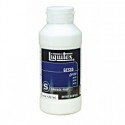

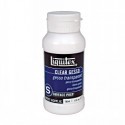
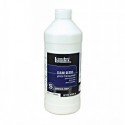

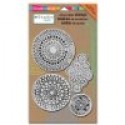



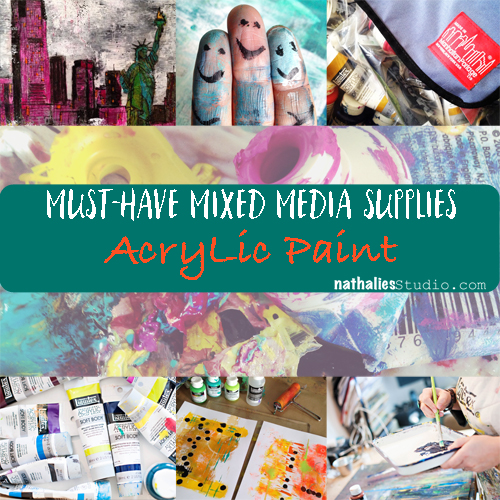
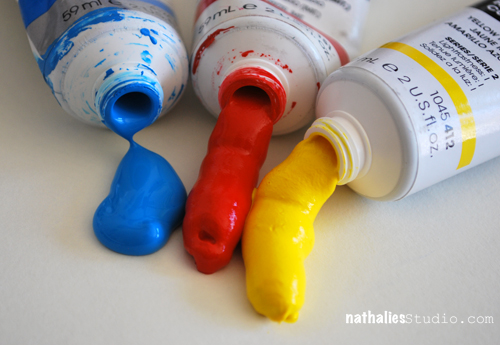
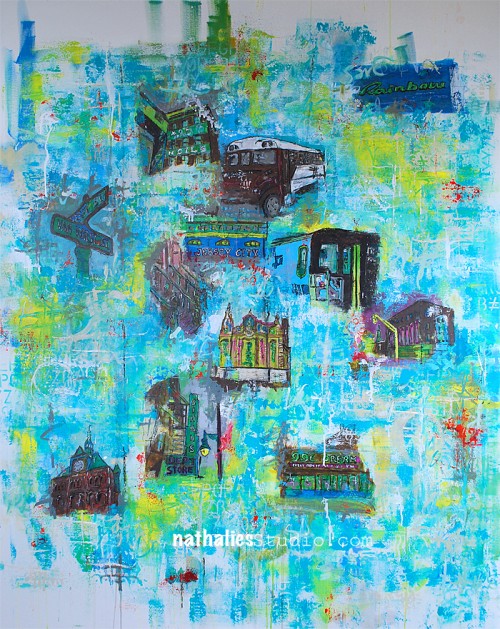
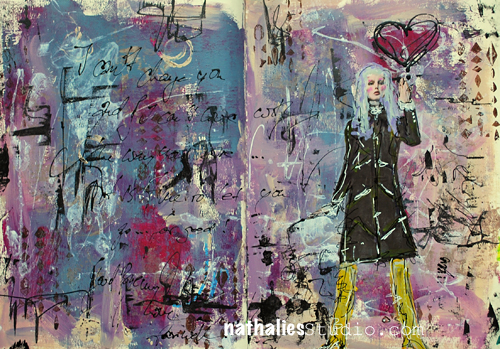
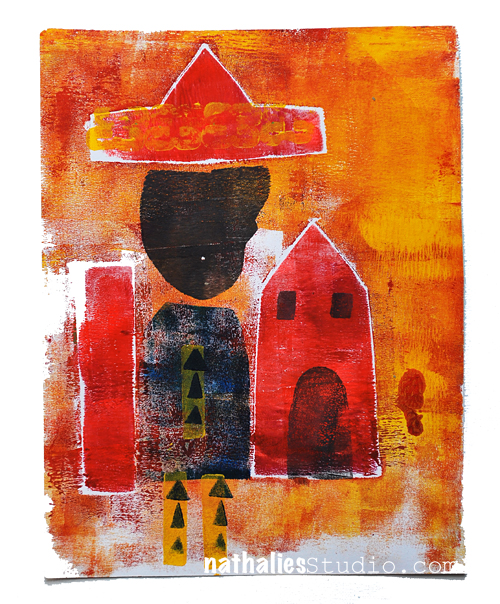
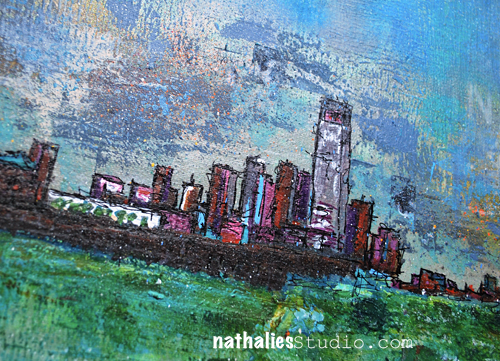
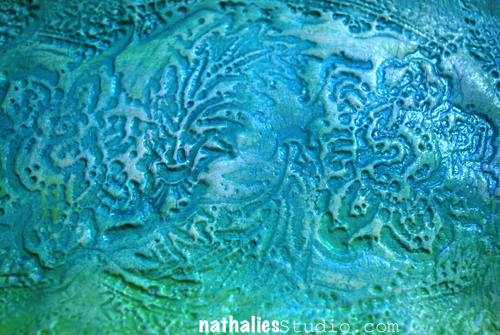
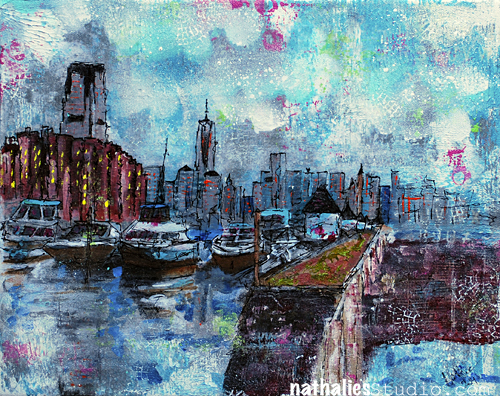


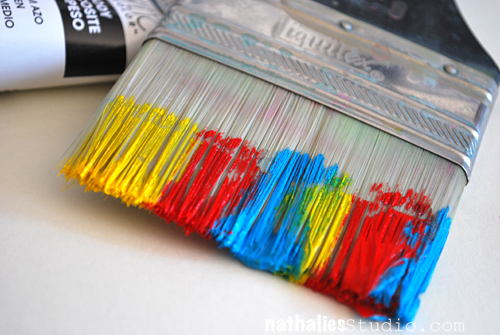
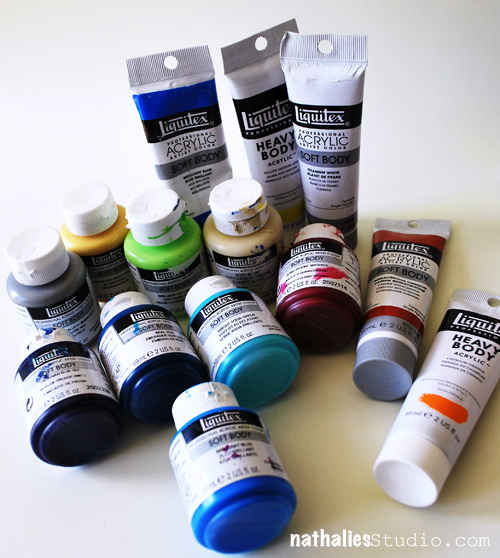

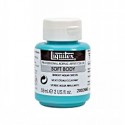
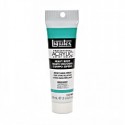
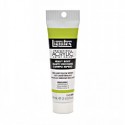
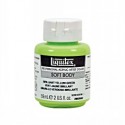
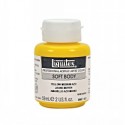
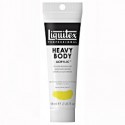
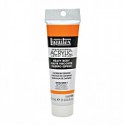
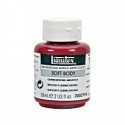
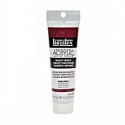
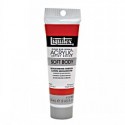

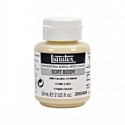
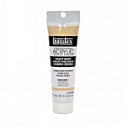

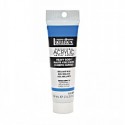
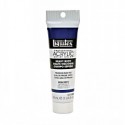
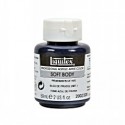

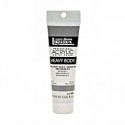

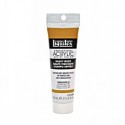

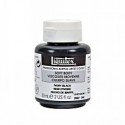
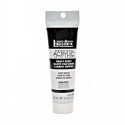
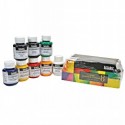
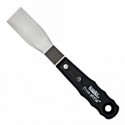
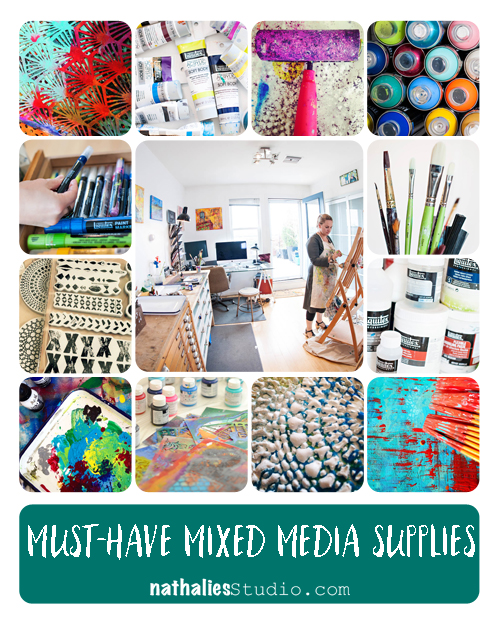
Comments (5)
ari
| #
very interesting and useful, thank you!
Reply
Ilana Polakiewicz
| #
Great post, Nathalie!
Reply
Sue Clarke
| #
Nice summary. I found out about gesso either from you or Julie and it is a must have supply for me now. The variety packs are a nice way to try the different kinds without a huge investment.
Reply
JoAnn Campisi
| #
Thanks for the info – didn’t know about Professional Liquitex Gesso – I have always used the regular. Will definitely try it out.
Reply
Terry Cohoe
| #
Great tips. Thanks.
Reply